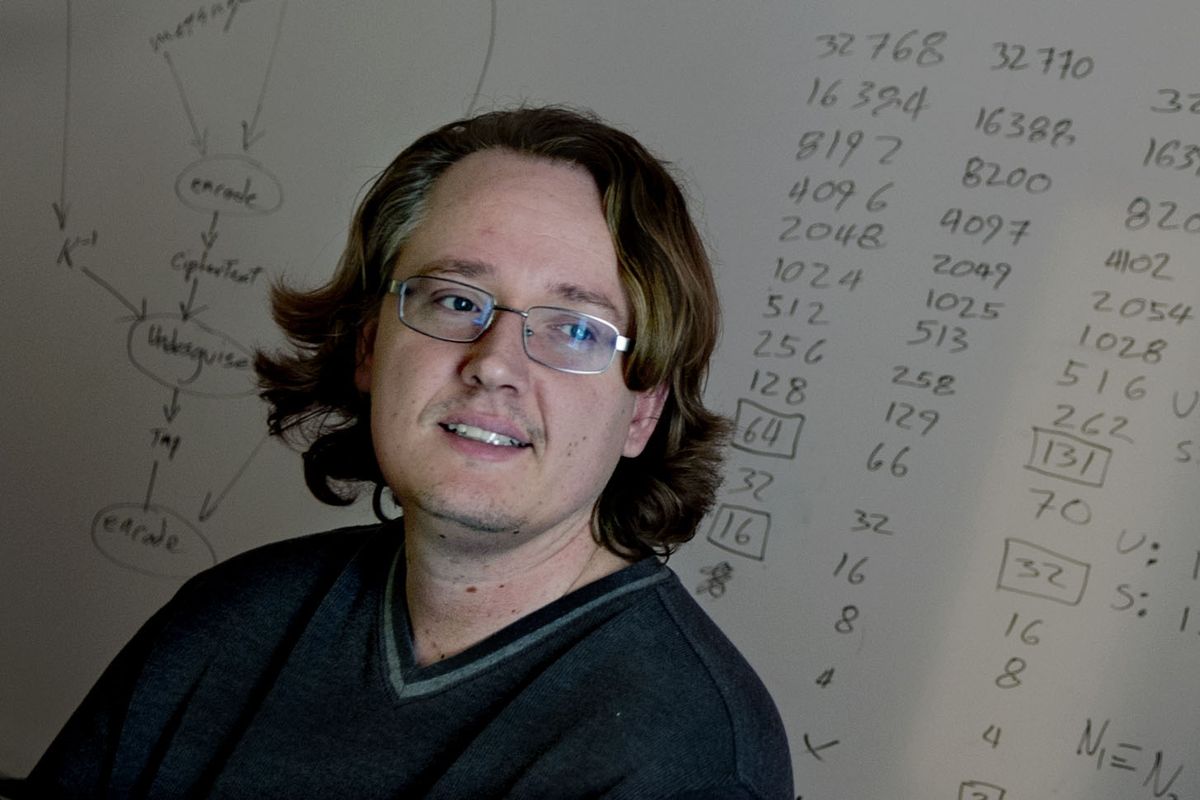Quantum leap: WSU grad student, adviser craft next-level cybersecurity code

PULLMAN – Numbers. Recurrence sequencing. Coefficients.
Nathan Hamlin and Bill Webb are math purists, drawn to what they describe as the beauty of numbers. A world of complex possibilities and precision.
Now, their fascination with math theory may soon find its way into the world of practical application.
What began as Hamlin’s doctoral thesis as a graduate student at Washington State University has become the first complex encryption code that may be able to thwart the hacking superpower of next-generation quantum computers.
“It kind of just evolved,” said Webb, a retired WSU math professor who served as Hamlin’s graduate adviser. “I don’t think there was ever a real ‘aha’ moment.”
Hamlin, who now teaches at WSU and is director of the university’s Math Learning Center, noted that potential applications were a final addition to his dissertation: “It’s the last chapter.”
But these days that’s what is getting the most attention.
The Fibonacci Quarterly, an international science journal, featured the encryption method in its February edition, which essentially serves as an invitation for mathematicians across the globe to put the potential new approach to the test.
“We think it’s secure,” said Hamlin, who spent two years developing the sequence and another two researching its encryption capabilities with help from Webb and WSU professor Bala Krishnamoorthy. “Now we’ll find out.”
The quantum challenge
The race to find improved encryption methods is being driven by the emerging quantum era.
Quantum computers, which are still in the developmental stage, would be exponentially faster because they can factor multiple calculations simultaneously. In contrast, while today’s computers are fast, they perform just one calculation at a time.
That speed and simultaneous factoring would give quantum computers the ability to quickly churn through existing encryption systems, leaving everything from online commerce to personal email vulnerable to intrusion.
Currently, the computer world uses a public-key encryption method known as RSA to secure private information. It relies on a public key for encryption and a private key for decoding. The system works well with current technology because it requires the complex factoring of extremely large numbers.
But it would be no match for quantum speeds.
“Quantum computers have been proved to factor large numbers efficiently,” said Robert Gilman, a professor at Stevens Institute of Technology in Hoboken, New Jersey, who leads the Algabraic Cryptography Center. “If people could ever build quantum computers, that would destroy RSA.”
Gilman said he’s familiar with the research by Hamlin and Webb but hasn’t thoroughly studied their approach.
A key measure for any encryption technique, he said, is its level of difficulty in each application: “Is it difficult all the time?”
In Pullman, the idea for the future of computer encryption is rooted firmly in the past.
The knapsack problem
An infamous math puzzle from the late 1800s known as the knapsack problem was turned into a potential encryption code during the 1970s. It was cracked within two years, broken by mathematicians using two separate avenues of attack, and by the early 1980s had been largely forgotten.
Webb, however, continued to discuss the knapsack code with graduate students.
“I kept wondering, ‘Couldn’t we write it in a more complicated way,’ ” he said. “It’s a simple, elegant code, but rather than just abandoning it we wondered if the weaknesses could be fixed.”
Among those students was Hamlin, who in 2010 began working on his doctoral thesis, which examined a concept known as recurrence sequence.
In its most simplistic form, the knapsack code is a puzzle. It begins with a large number, which is represented by the knapsack, and gives numeric values to a series of objects. The goal is to find the proper combination of objects to perfectly fill the knapsack.
Hamlin, with Webb’s help, decided to try plugging the code’s holes.
“We used alternative ways of representing numbers,” said Hamlin, explaining they developed complex new digital systems that go beyond the standard binary and base 10 sequences.
“By using very complicated number strings, we produced a new version of the knapsack code that can’t be broken by the usual cyberattack methods,” Webb added. “The whole thing of cryptography is it’s kind of like an arms race.”
The next step is to see how the code holds up under peer review.
“We may hear six months down the road that it’s been broken,” Webb said.
Hamlin is doubtful that will happen but acknowledges it’s a very real possibility. “The purpose of the paper was to show how our knapsack code was resistant and secure,” he said.
Either way, though, both remain fully engaged in the academic side of number theory.
“We like the fun in doing it,” Webb said. “If it can be useful, that’s great. But the reason we do this is because it’s fun.”